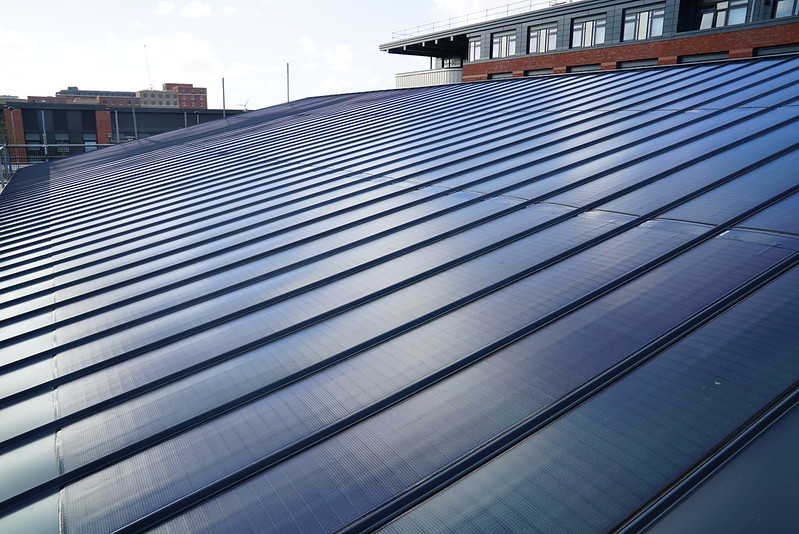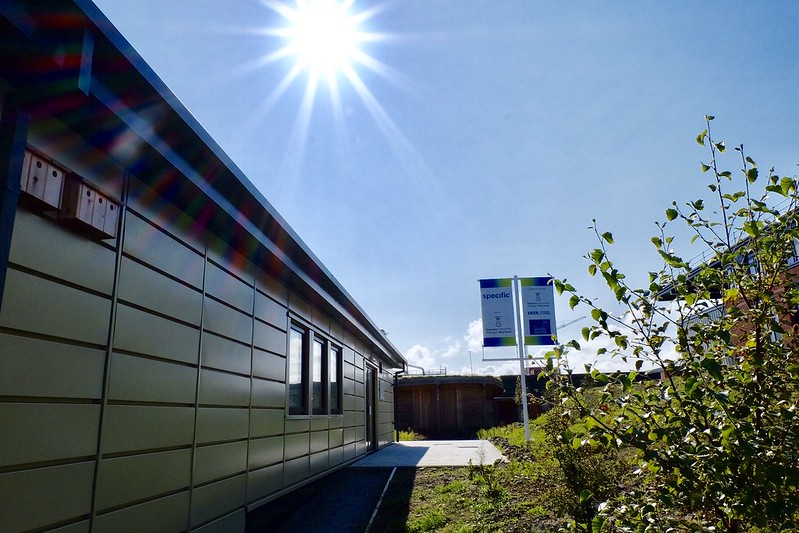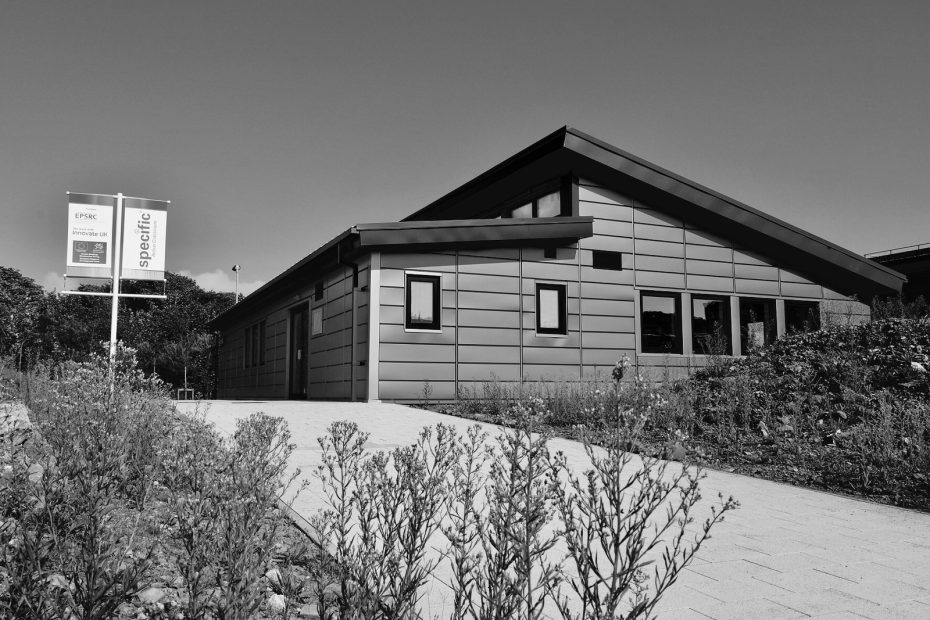The Active Classroom was designed to be disassembled: most of its main components can be taken apart and reused. However, there is still much to learn about such design strategies. In a recent paper, researchers carried out a Life Cycle Assessment of the Active Classroom to better understand the environmental impacts of design-for-disassembly buildings. Design Manager Dr Joanna Clarke tells us more.
The construction industry must urgently reduce its carbon emissions. Globally, buildings and infrastructure account for 40% of carbon dioxide equivalent emissions, and an estimated third of the world’s total waste. If we are able to reuse building components instead of disposing of them, we can save both carbon emissions associated with construction waste, and carbon emissions associated with any new building assembled from salvaged components.
The carbon emissions associated with operational energy use of buildings have decreased in recent years due to the increased use of renewable energy. As a result, the need to focus on the embodied carbon within buildings has become more crucial. Therefore, we need to consider alternative ways of designing and constructing buildings, such as design-for-disassembly, to reduce the embodied carbon of buildings.
Design-for-disassembly is a circular design strategy that reduces waste production and raw material use, and increases the reuse of materials. However, current UK built environment targets for reducing carbon emissions and energy use are not well suited to assessing the impacts of circular design approaches. Furthermore, while design-for-disassembly is a well-established concept, more real-life examples are needed.
The paper: assessing design-for-disassembly strategies
Our paper includes a thorough review of the Life Cycle Assessment (LCA) process and the challenges in undertaking an LCA of a design-for-disassembly building, which is not a well-researched area currently. The process of assessing the Active Classroom is then described in detail, before discussing the findings of the study, which provide a good case for adopting the design-for-disassembly approach for this type of building. Obviously, we ideally want to construct buildings for longevity but, if a building is intended to be temporary, then the design-for-disassembly approach should always be considered.
The results of the Active Classroom LCA were compared against current UK industry targets for global warming potential, energy use, and material reuse to determine the targets’ effectiveness. The assessment found that the Classroom:
- Has a global warming potential 26% below baseline industry target values.
- Operates using less energy than targets for education and office buildings.
- Was designed to enable reuse of 65% of materials at end-of-life.
The study finds that the current targets do not fully capture the benefits from increasing material reuse through circular and design-for-disassembly strategies. Target values should therefore be expanded to include more environmental indicators, providing a more holistic view of sustainability.
Currently, research into design-for-disassembly relies on many assumptions, as there are limited examples of real-life disassembly of buildings, which makes it difficult to fully understand the benefits. Hence we have emphasised the need for more examples of real-world disassembly of buildings designed for deconstruction. While the research described in this paper is interesting, it is still theoretical at this point. Actually disassembling the Active Classroom and finding a new use for its components is where the really exciting research lies.
What’s next for the Active Classroom?
The Active Classroom was designed as a temporary building. After providing a flexible space for University activities since 2016, the time has come to test the disassembly theory in practice, building on the work undertaken in this paper. As discussed in a previous blog, the Classroom has provided many opportunities for research since its construction and now enables us to explore the realities of design-for-disassembly. As well as the potential carbon savings associated with reuse of materials, this will allow us to work with some of the companies involved in the construction to investigate how their systems have performed over time, providing valuable feedback to their product development.
Even as we say goodbye to the Active Classroom in its current state, its contribution to research continues. Once the building is disassembled, each component will be assessed for reuse and a new building designed out of the reusable parts. We are excited to see how this work progresses and to find a new use for the building.
By disassembling the Active Classroom, we hope to show the benefits of considering reuse of materials at design stage to help combat the high consumption of resources and low recycling rates that currently exist within the construction industry.


